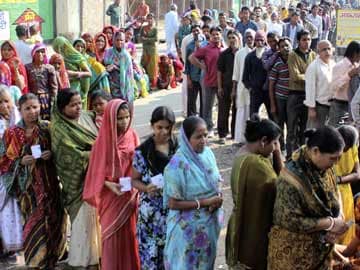
Considered the semi-finals of the crucial general elections, due by May 2014, the Assembly polls in five states, held in November and December this year, witnessed a few interesting trends.
Presenting the five rules of the Indian elections:
Sharp rise in the number of women voters: 72% women vote now as compared to 45% three decades ago. Now, they're only 2% behind men. In Rajasthan for example, more women voted than men in the current Assembly election which is 1% higher than before. (See graphics)
The end of anti-incumbency: It has now replaced by development vote. If you deliver, you are voted back. In the last 10 years, 50% of the governments were voted out. From 1977-2002, called the angry phase in Indian politics, 70% of the governments were voted out.
State elections more important than national elections: While there was an average 57% turnout in the 80s and 90s for Lok Sabha polls, it was 53% for Assembly elections. Now, the turnout for state assembly elections was 20% higher than for the last national election in 2009.
State elections winner does better in the following national election: Whoever wins the state election can be pretty much sure of winning the parliamentary election in the same state.
Look out for three bellwether constituencies: In Delhi, Model Town, Rohtas Nagar and Malviya Nagar have voted in the same manner for assembly elections and national elections over the last 20 years. In Rajasthan, the three constituencies are Pindwara Abu, Mandal and Chittorgarh while in Madhya Pradesh, they are Khargone, Sendhawa and Rajpur. The party that wins these seats also wins the parliamentary seat.

